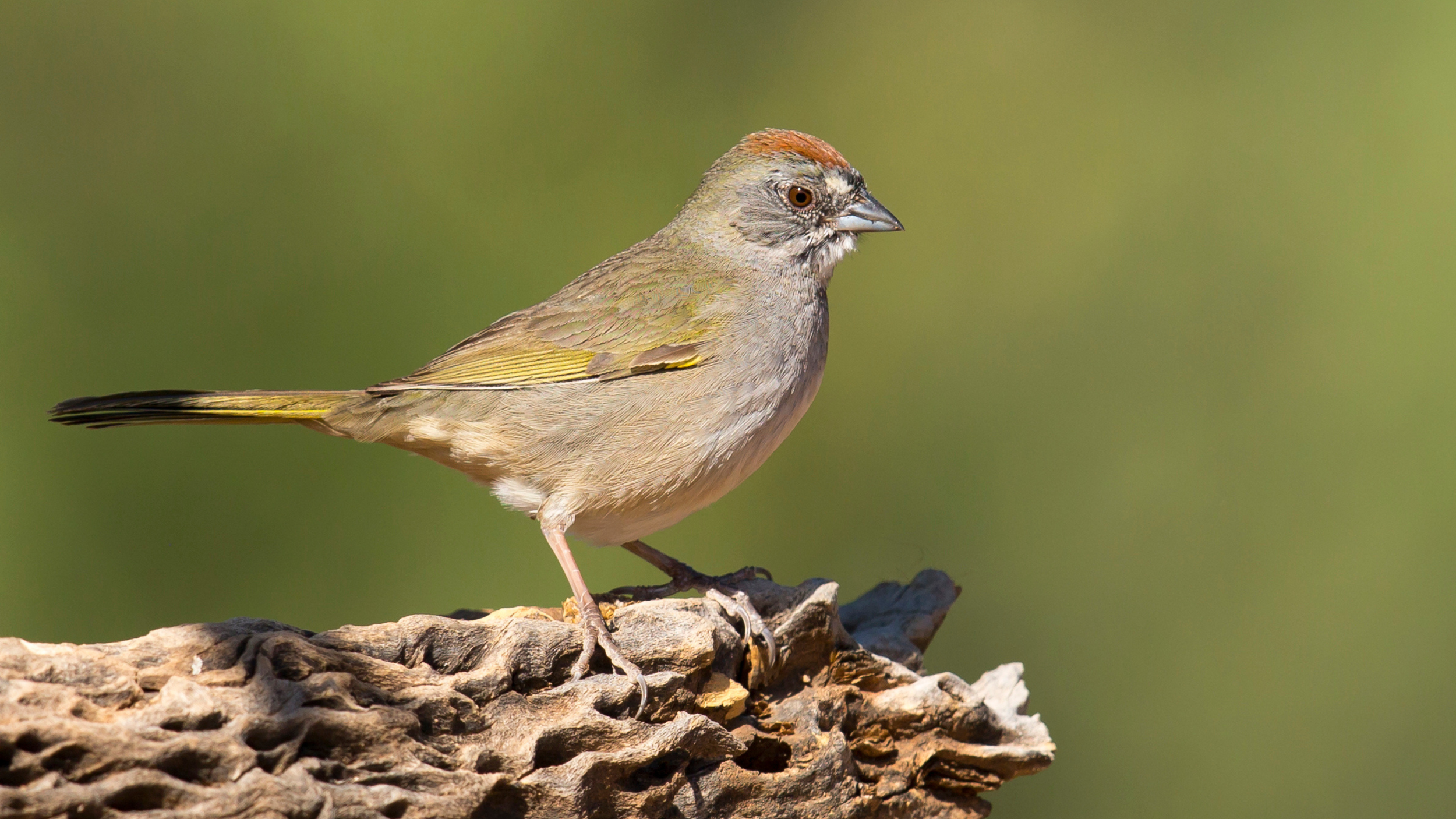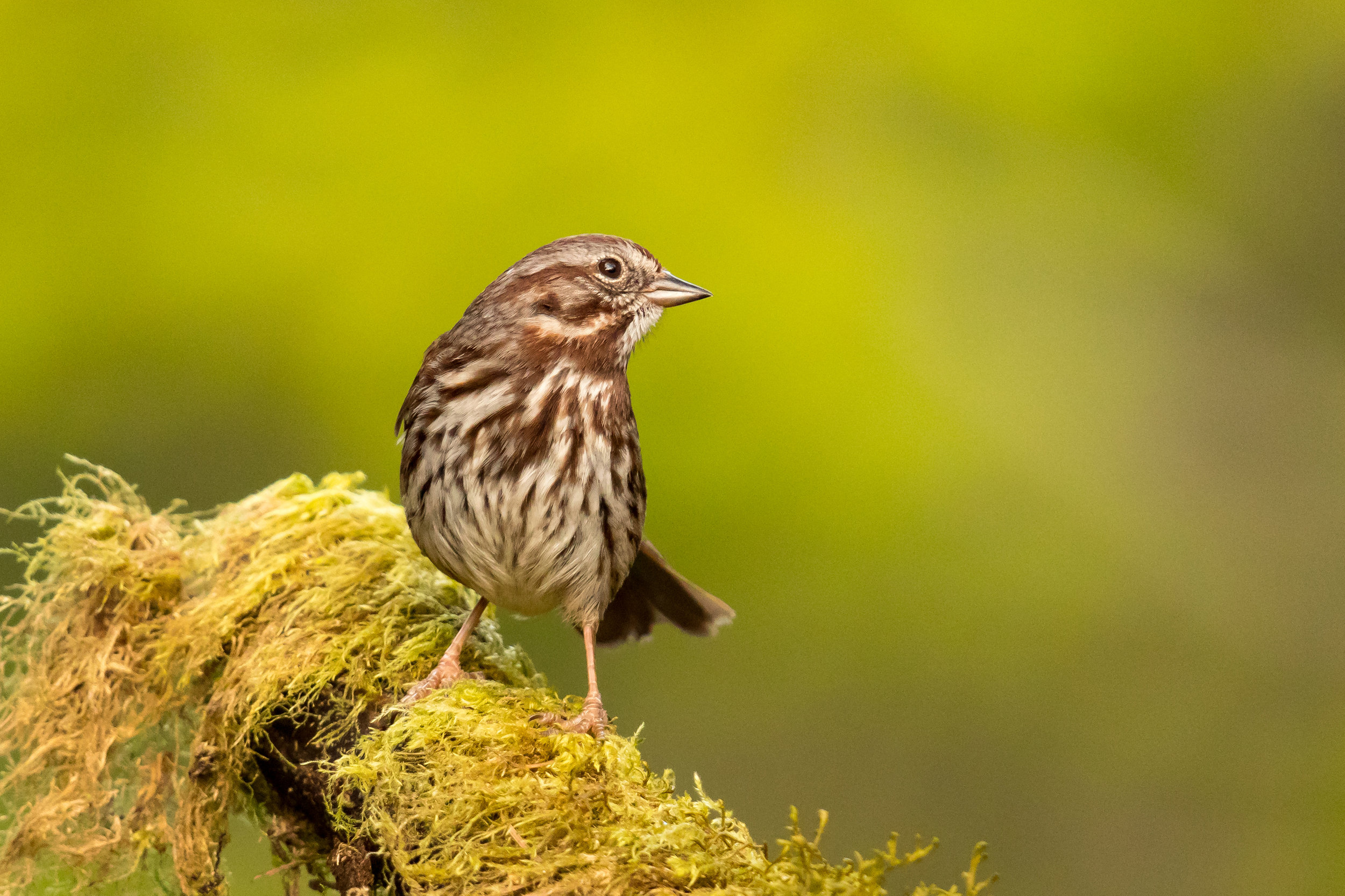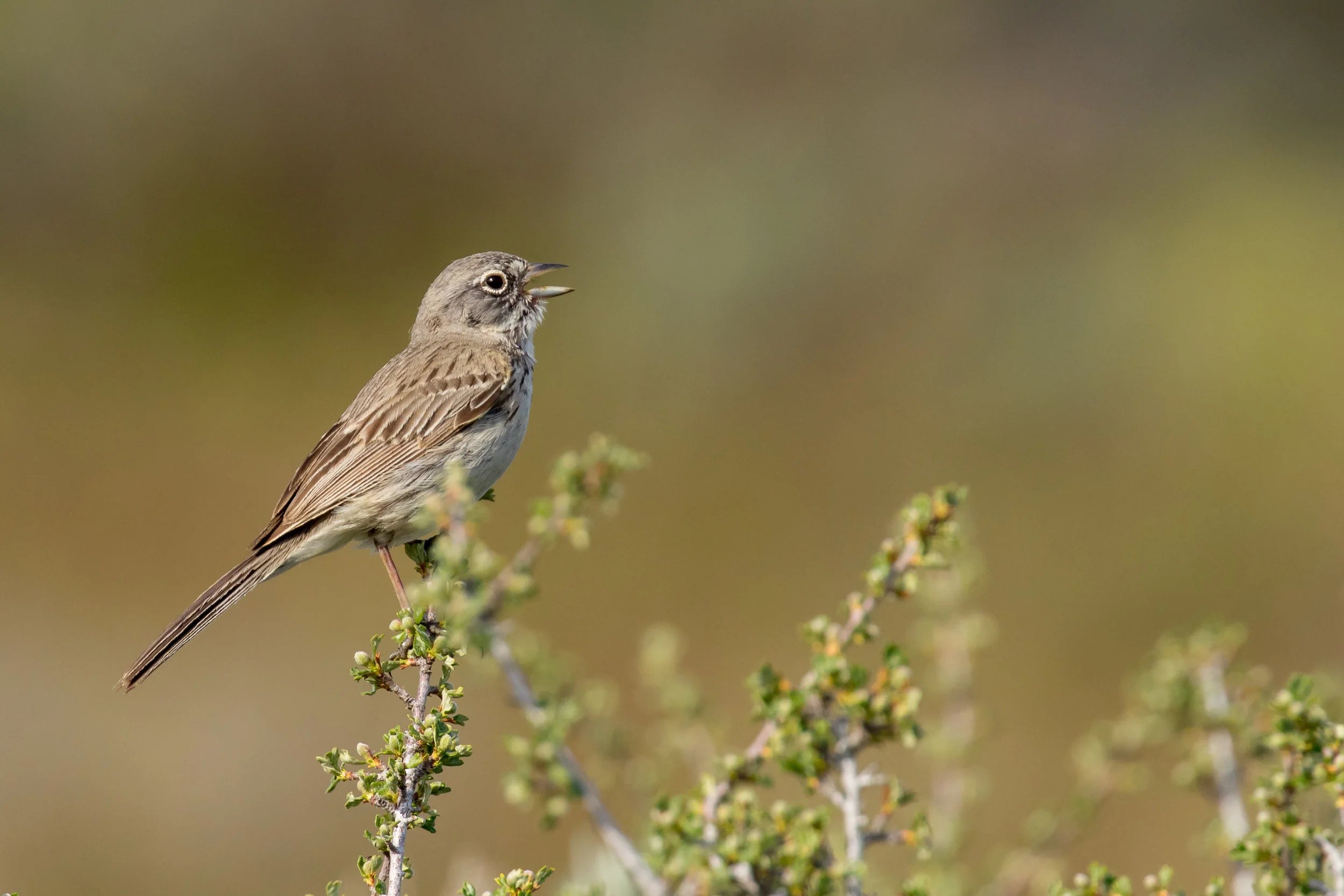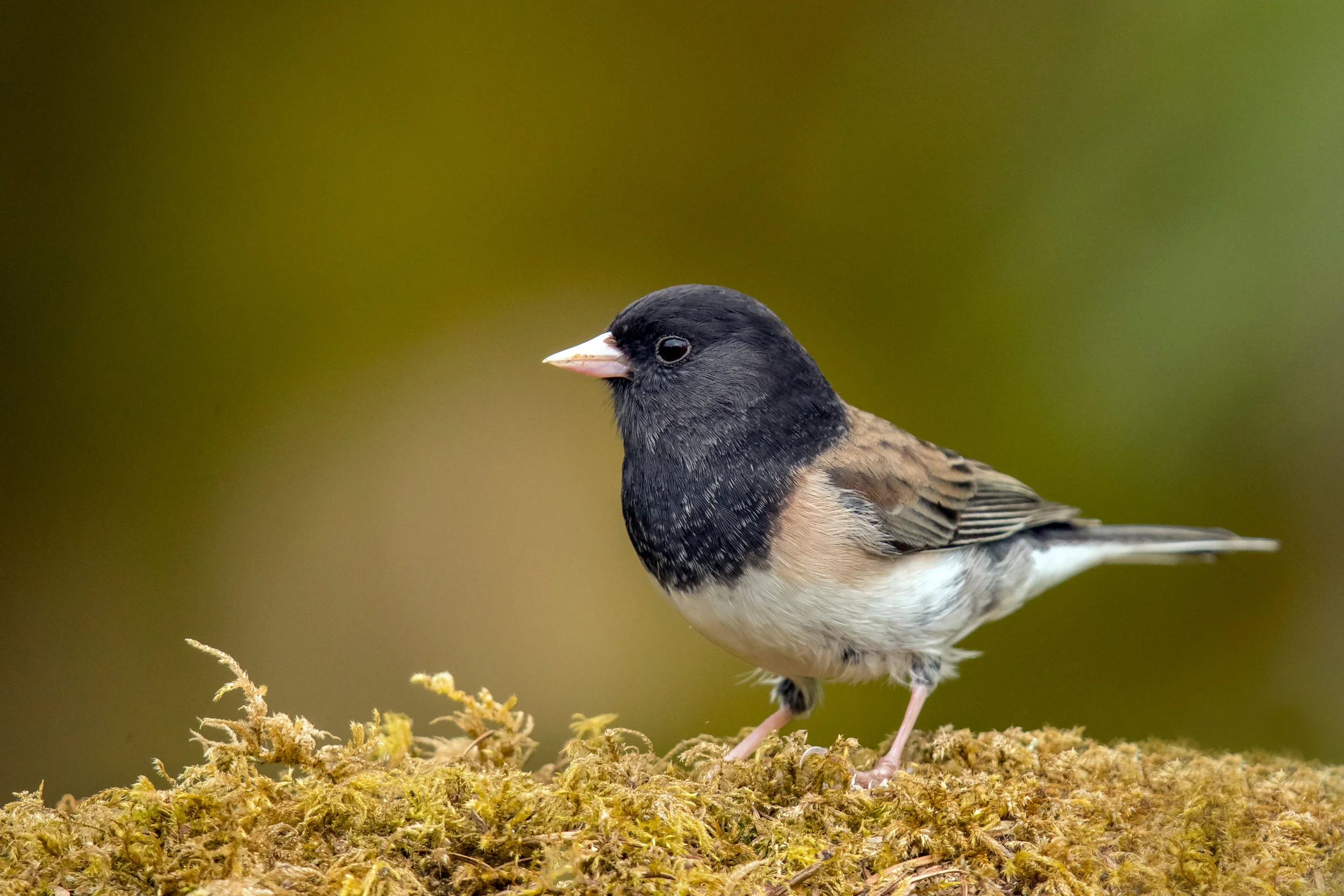Gallery - Sparrows
Harris’s Sparrow is an irregular winter visitor to the Pacific Northwest when it sometimes associates with other Zonotrichia sparrows in lowlands and around the Columbia plateau.
The Green-tailed Towhee, common in much of the Great Basin area, is a local breeder in the shrubby slopes of the Blue Mountains of southeastern Washington.
The Lark Sparrow is our largest open country sparrow. Its intricate facial pattern is a spark of brightness in the grasslands.
The White-throated Sparrow is being seen more often during Washington winters and birders have two color morphs to appreciate.
A boreal forest breeder, the Golden-crowned Sparrow winters along the Pacific coast from September until April when it returns north to breed.
The Spotted Towhee rustles through leaf litter, attracting the notice of people who can be surprised when they learn that it is a bird making all that racket.
The chipper forages in small flocks mostly on the ground and in low shrubs. When flushed, the group will fly up into a small tree. Its diet consists mostly of various insects in summer and a variety of seeds in the winter, but it will take both in any season.
The Song Sparrow is one of the most common birds in North America. However, it has demonstrated an amazing ability to adapt to its surroundings and today there is a wide range of variation in color and size in this species across the continent.
Brewer’s Sparrow is a bird of the Great Basin, and it is the most populous bird in sagebrush flats and desert shrub habitat in spring and summer.
Eastside Audubon’s Bird of the Month for February 2019 is the Swamp Sparrow. The Swamp Sparrow is more closely related to and shares the same genus Melospiza (song finch, from Greek melos, song, and spiza, the chaffinch) with the Song Sparrow (M. melodia).
Formerly part of the Sage Sparrow complex of four subspecies, the Sagebrush Sparrow has been split off by the American Ornithological Union as a separate species and the remaining three subspecies are now grouped and renamed as Bell’s Sparrow A. belli.
The American Tree Sparrow is always a treat to see. It is a winter visitor to Washington and is most often seen east of the Cascade Range. However, some individuals occasionally stray westward and provide birders in Western Washington with a noteworthy observation.
Lincoln’s Sparrow is one of those little brown birds that give many birders a lot of trouble in identification. It is a secretive bird that forages on the ground in dense cover of brush or thick grasses making it difficult to see.
The White-crowned Sparrow (WCSP) is about 6 ½ - 7” long. It has a boldly streaked black-and-white head; pink, orange or yellowish bill; whitish throat and clear gray breast.
The Savannah Sparrow (SASP) is 5.5" long with a 6.75" wingspan. The genus name Passerculus is from the Latin meaning little sparrow. The species name sandwichensis is Latin, of place, Sandwich, Unalaska, or Aleutians area, from which came the first subspecies, Aleutian Savannah Sparrow, to be described.
Juncos are common and abundant, sparrow sized, 6” long with light pink to white bills, gray or black hoods sharply set off from white belly, and white outer tail feathers that are conspicuous in flight.
The genus name Passerella (pass-er-EL-ah) is from Latin, passer, meaning a sparrow. The species name iliaca (eye-lih-AY-cah) is Latin relating to the marked flanks. The common name is from the reddish or tawny “fox” color of feathers. The Fox Sparrow (FOSP) is about 7” long with a wingspan of 10.5” and a weight of 1.1 oz. (32g). It is one of our largest sparrows.


















